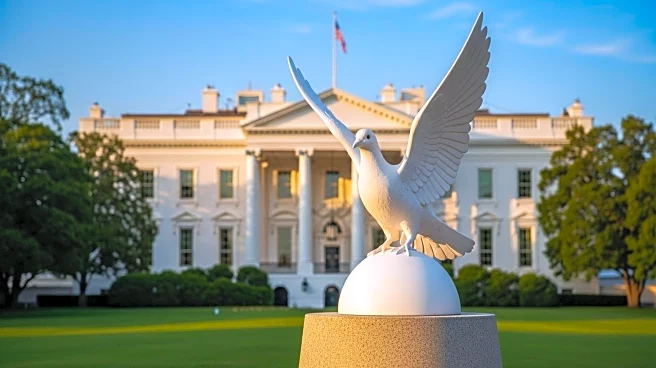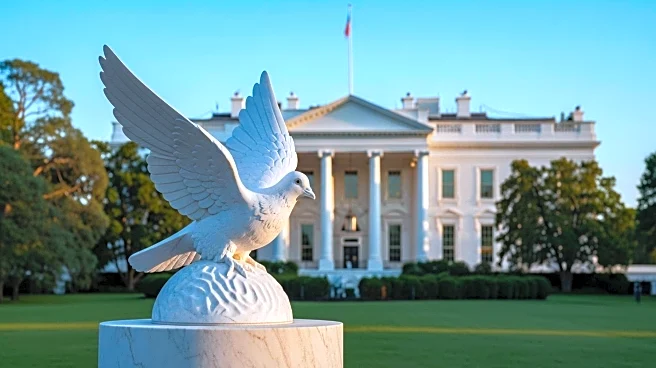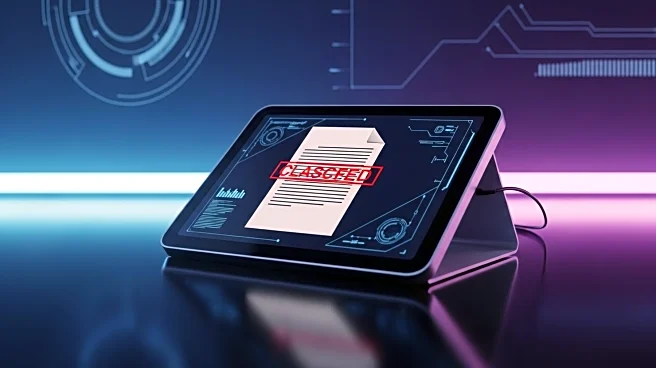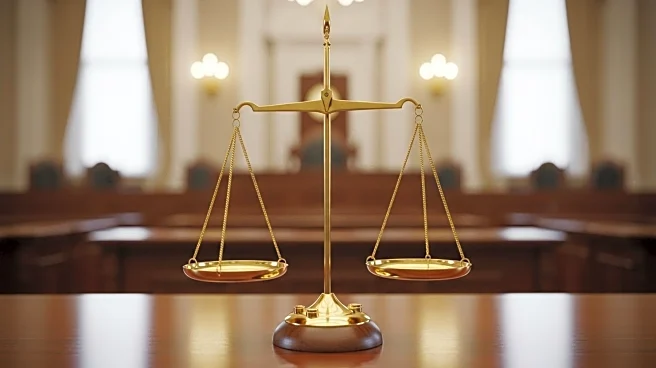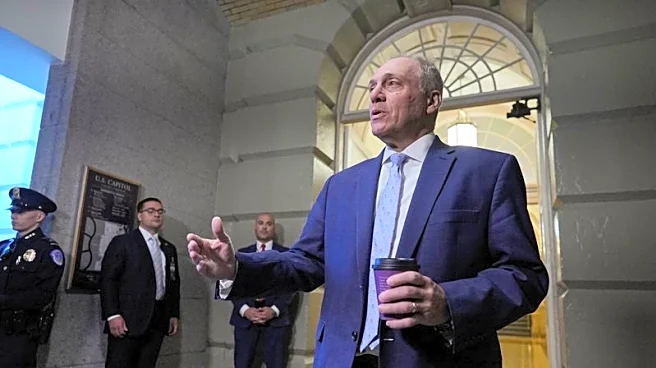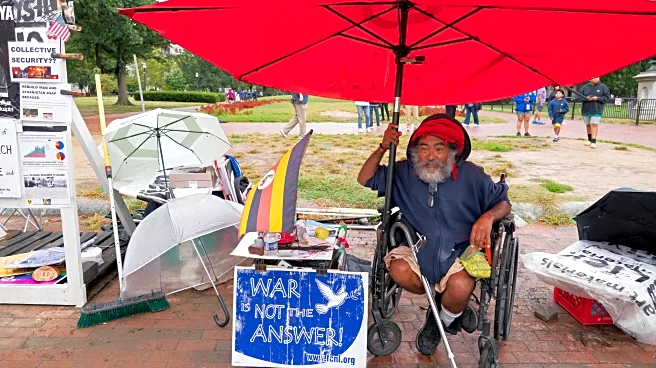What is the story about?
What's Happening?
Law enforcement officials dismantled a peace vigil in front of the White House, which had been in place for over four decades, following orders from President Trump. The vigil, initiated in 1981 by William Thomas, aimed to promote nuclear disarmament and peace. It was considered the longest continuous anti-war protest in the U.S. The removal was prompted by a question from a journalist, Brian Glenn, who described the vigil as anti-nuclear and sometimes anti-America. Trump responded by instructing his staff to dismantle it immediately. Volunteers, including Will Roosien, attempted to resist the removal, leading to his detention. The vigil's longest-serving steward, Philipos Melaku-Bello, indicated that the issue might end up in court.
Why It's Important?
The dismantling of the vigil highlights the Trump administration's approach to public protests and its broader impact on civil liberties. The action reflects ongoing tensions between the administration and activists advocating for peace and disarmament. It raises concerns about the administration's influence over public spaces and the potential suppression of free speech. The removal of the vigil, a symbol of continuous advocacy for global peace, may affect public perception of the administration's commitment to civil rights and freedom of expression.
What's Next?
The dismantling of the vigil could lead to legal challenges, as indicated by Melaku-Bello. Activists and civil rights groups may mobilize to contest the administration's actions, potentially resulting in court battles over the right to protest in public spaces. The administration's broader policies on public demonstrations and civil liberties may face increased scrutiny and opposition from political leaders and advocacy groups.
AI Generated Content
Do you find this article useful?
